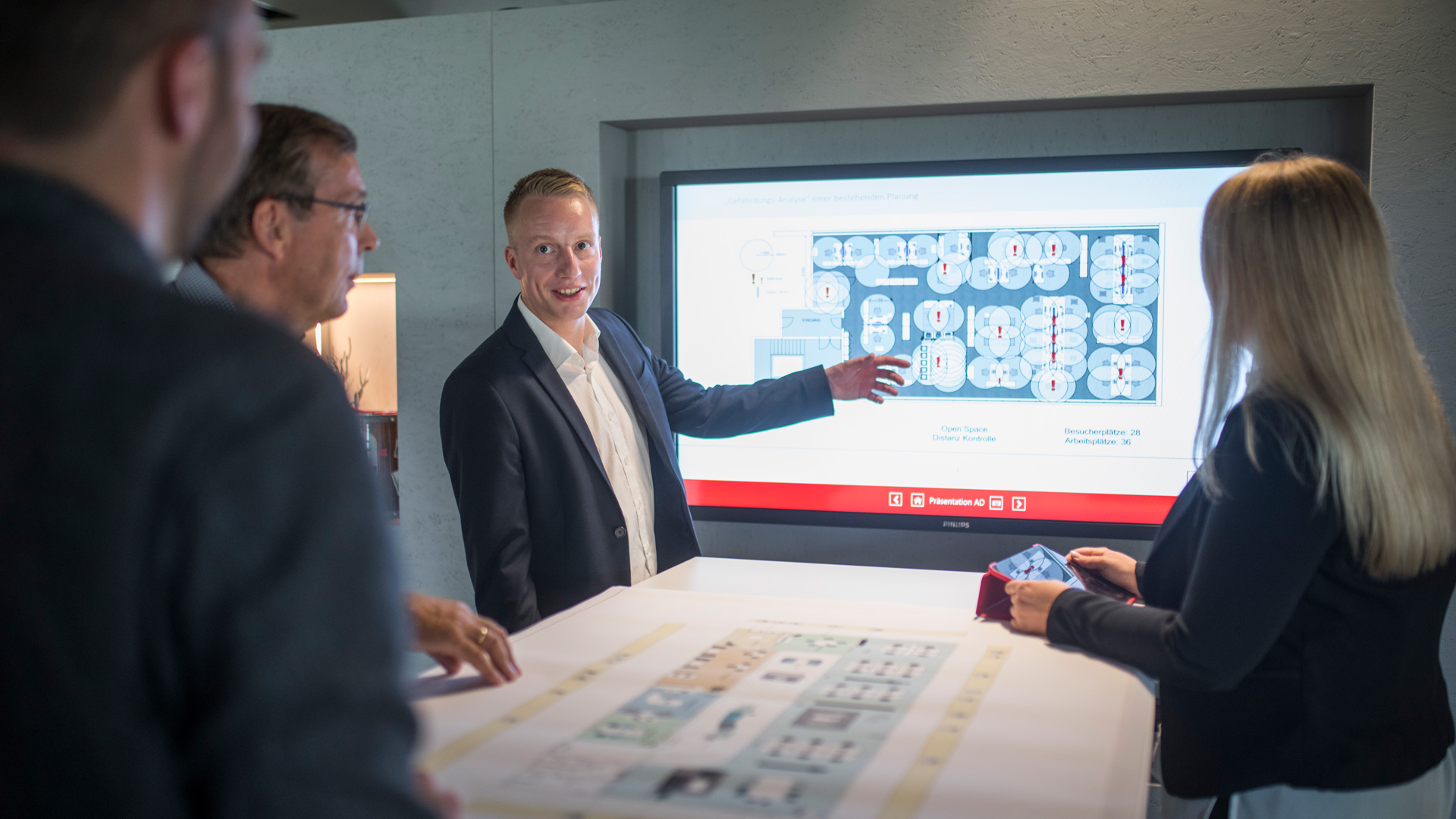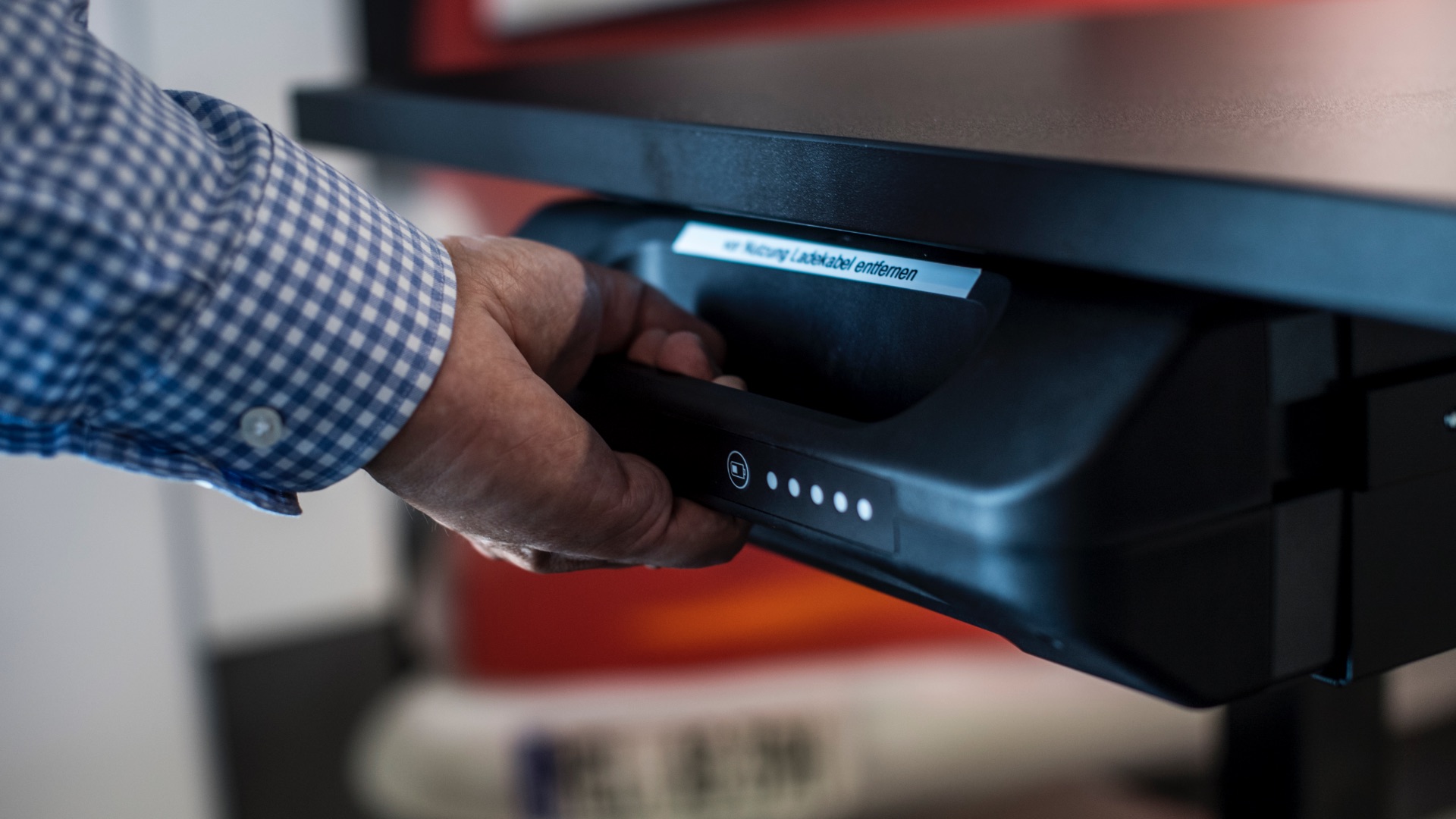
The right office design
The TREND REPORT editorial team spoke to Günter Osterhaus, Office Consultant at ASSMANN Office Furniture about modern office planning and the future of workplaces.
Mr Osterhaus, what impact does “agile work organisation” have on workplace design?
In the past, workplaces were compromised so as many employees as possible could be squeezed into the smallest area. This approach was shown to make little sense and the trend moved towards forming work groups who could then flexibly design their own work times and places. It has since been found that the resulting spontaneous encounters and changing impressions have a significant influence on promoting creativity and productivity – as 80 per cent of innovations develop spontaneously rather than from a plan.
80 per cent of innovations develop spontaneously rather than from a plan.
The Smart Office approach enables totally new ways to address individualisation. With smart options for booking workstations, employees can access office workplaces that are always custom-configured to their requirements, in spite of desk sharing and reduced presence times in the office.
Should employees be involved in the planning of new work environments?
Employees have their likes and dislikes. Let’s take an office swivel chair, for example, where someone has sat for a long time. That is like your own bed, so many employees will object to sitting on a different chair each morning. It is good to take that into account, but of course it is also necessary to see how that can be managed. Information, openness and clarification about how a new workplace will work, for example, or how the work will be organised, is definitely useful.
How much technology or equipment can modern office furniture or furnishing accessories take today?
Always more technology. With storage space for example: that’s changing completely and becoming more intelligent – as can be seen in the trend towards mobile storage space solutions with the most flexible drop-off systems. We sometimes see that today in modern crime films where, for example, interactive slides make entire glass surfaces usable as a Windows surface.
Are you working on this?
Yes, we have been developing furniture with integrated battery systems for the new generation of plugs and sockets together with our battery partner, the Bachmann GmbH company from Stuttgart – to recharge the electrically height-adjustable desks, mini PCs or notebooks, standing lights with presence detectors or workplace printers. There are now also USB3C recharging units for smartphones and the like. The battery-run devices are simply plugged into a docking station at the coat rack or another central location in the office area and are fully recharged in around six hours. That ensures plenty of flexibility without having to find a fixed socket unit.
But does your work go beyond the development and design of office furniture?
Yes, indeed it does! We advise our customers and our specialist retailers, who ultimately also advise our customers on the planning of their offices. The demand here for individual advice and planning from specialists is currently very high. That is why we at ASSMANN 4ROOMS have comprehensively extended our range of services and given it a clear structure. Advice, planning, products and service all belong together with us, but of course they can be accessed individually by our customers. All depending on whether an overall offer or just a partial aspect of our services is required.
And is it sometimes necessary to change existing areas?
We are often confronted with the problem of narrowly-planned buildings with long, thin areas where at best a corridor has been planned in the middle. That’s all you can do. That definitely does not reflect the modern world of work, where we move about, where we need paths and crossings as well as spaces for communication and exchanges of views.
Read the complete interview here.
